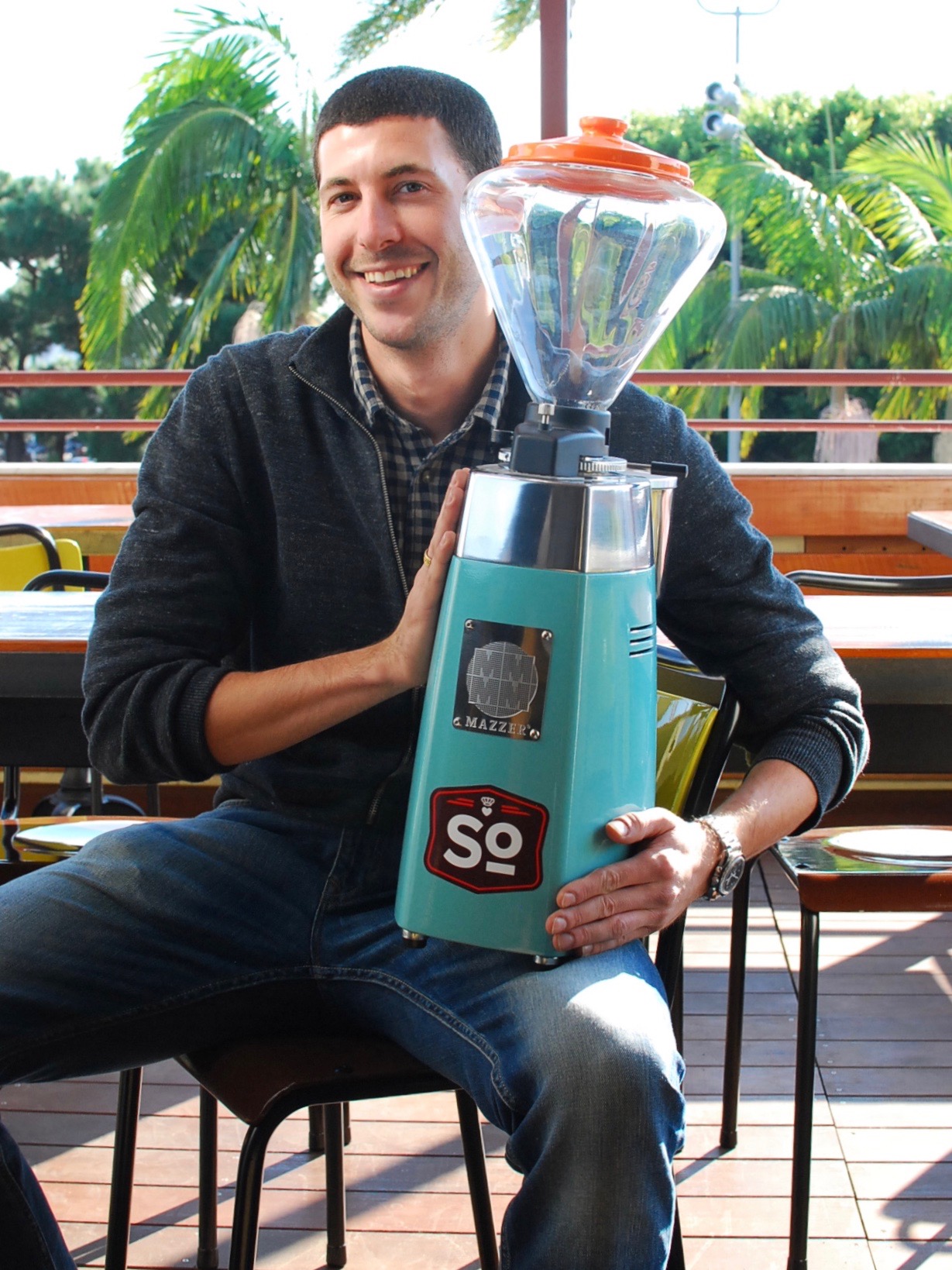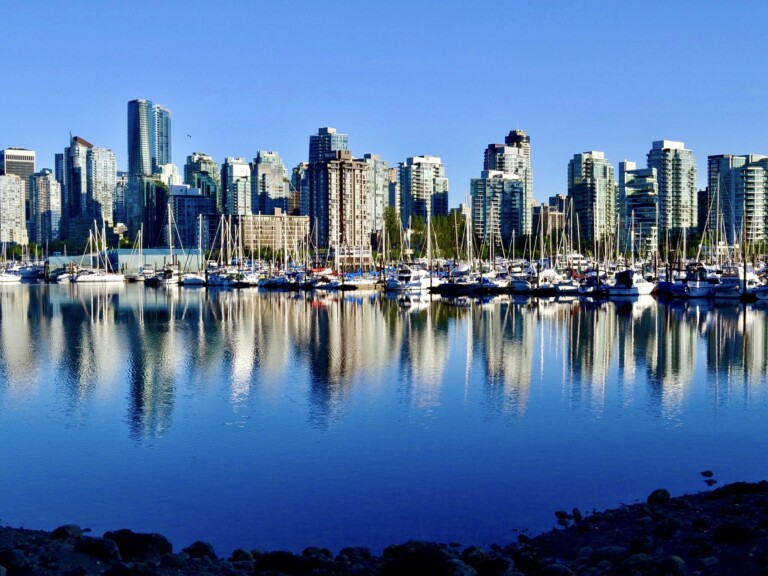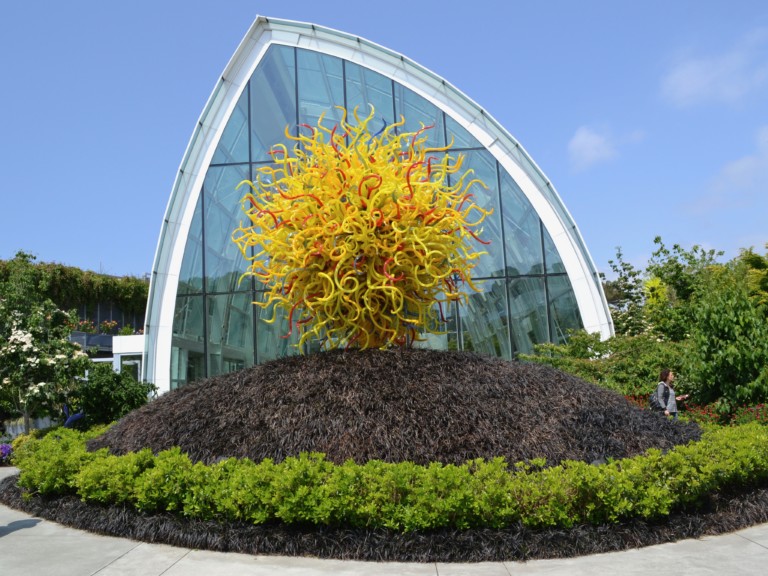Nik Krankl first fell for coffee during a college trip to Italy. He returned to the States, became a ravenous home barista, and once he moved to Boston, took the hobby to the next level. He started working at a barista in a popular ice cream shop called J.P. Licks before he purchased, refined and ultimately sold Taste Coffee House to specialty coffee visionary George Howell. He moved back to his native Los Angeles and consulted at his family’s Gelato Bar and Coffee Commissary. He also took second place at the 2011 United States Barista Championship before signing on as Director of Coffee for Single Origin, which his aunt Nancy Silverton co-owns at the Original Farmers Market, along with Short Order and Short Cake, a bakery that shares Stall #316 with Single Origin. We met Krankl at the Original Farmers Market on November 7 during a training session, and he better explained his connection to coffee and vision for Single Origin.
What was your very first coffee memory?
I went to Bologna and my friend was studying abroad there. I went out with him and spent the entire time drinking espresso. I think I was 18 at that point, 19. The coffee tasted good. The coffee tasted great in Italy. I came back, super psyched, willing to go to coffee bars and wanted to bring back this culture, and there wasn’t any. The coffee tasted bad in the U.S. Shots of espresso were awful. Cappuccinos were dry and airy.
Where were you living at that point?
At that point, I was just graduating at the University of Arizona, in Tucson, about to leave for Boston with my wife. I went and visited him, came back, “Where’s coffee?” “I don’t know.” I became a home barista, so I bought a Starbucks barista machine, my first one. I started geeking out, reading everything I could, started making coffee, and that’s what it’s all about. You start to figure it out. As time went on, I got more and more tools. I upgraded to a Rancilio S24 with Mazzer Mini. At that point, I was able to produce some really good home coffee. I then went and worked at a place that roasts their own coffee – not seriously – in Boston, and makes their own ice cream.
What’s it called?
J.P. Licks. That was my first time in a commercial setting, working on commercial machinery and doing any kind of volume. Because it’s one thing to be a home barista and spending an hour making yourself an espresso; it’s another thing to move a line. From there, I started to embrace this whole counter culture that isn’t in the U.S., and I wanted to see be part of the U.S., because I love it so much. I opened up a shop thereafter, about a year after.
What year would this have been?
This would have been in 2008, actually, my first year competing, and also my first year at Taste, which you covered, so you know a little bit about it.
Only in relation to barista competitions.
Taste was called Taste of Newtonville before I bought it. So it was an existing place that did crappy coffee. It just was not special. What was special about it was that it was in a neighborhood that seemed like there was a lot of cultural influence by people who could appreciate quality, and could appreciate what I wanted to do, which was specialty coffee in a creative environment, more importantly, that people came together, that people felt comfortable.
As far as coffee goes, it was more self taught?
Completely. I did certain things, like I definitely became a ferocious reader, online coffee geeker. Whatever material was out there, I skimmed through and paid attention to.
In the Boston community, would you consider anybody a mentor?
Yeah, absolutely. George Howell, number one, first and foremost. The coffee culture he’s paved has become monumental. He’s definitely one of these forefathers who saw specialty coffee coming before anybody else did.
What did he teach you specifically?
Well, I got to cup with George. I got to see green coffee for the first time with George. Before that I had done a little bit of home roasting, on like a Behmor, ordering through Sweet Maria’s, which is pretty good for a home person. I got to actually go into the roastery and see production roasting, and just pick this guy’s brain, and taste coffees for defects, taste coffees for age, taste coffees for ripeness and sweetness and acidity. He just opened up my whole mind to a palette of flavors that coffee has available. I also worked with Barismo. They’re a super small batch roaster in Boston.
With Ben Kaminsky?
Ben Kaminsky, who’s now at Ritual. Jamie Van Schyndel, those guys were great. They definitely helped me walk into the world that is barista competitions, which I was not familiar with, did not know how serious it was. That said, they were great. They took me under their wing, they taught me what they knew, which, looking back, they were still figuring it out as well. We were all young. Barismo opened around the same time that I went into Taste, so they were a brand new company, starting off, hand bagging everything, and I had a lot of success. I got second in the Regional that year, and I think I got 25th in the country, with like no training. I had training, but everything was minimal, everything was raw at that point.
Why was it important for you to compete?
I don’t know. Maybe it was a test for myself. I wanted to take it to the max, and part of doing that was taking the next step. I had learned it at home and was happy with my results, and was having great success at Taste. That was one more check box I wanted to mark off and essentially look to see – it sort of reinforced what I was doing and showed me there was validity behind precision and behind the scrutiny of every detail. Barista competitions make you do that. It was great.
You competed two or three times?
This past year was my third year competing. I’m really known for getting second place. I’ve gotten second place three times in the Northeast, and this year, I got second place in the U.S. behind Pete [Licata]. I’m a really good runner up barista competitor.
Second in the U.S. isn’t bad. So why the decision to sell Taste and return to Los Angeles?
The same thing that brought me to Boston is the same reason I left. My wife got into Harvard Med, so we went from Arizona to Boston, and then when she got into UCLA for her residency, we moved back. It was really hard to leave. It was a baby I had created. At this point it was like a teenager, but I was fortunate enough to leave it in the hands of George Howell, who bought it. This is his first café since the Coffee Connection, so I felt really privileged that was the person that would be taking it on and I know he’s done a great job.
Knowing what you know from having already operated a coffeehouse, and knowing what you know about Los Angeles, what will you do differently this time?
Well, I’ve had the luxury of building the bar from the ground up. When I went into Taste, like I said, it was an existing business. I really had to work around the parameters of what was already there, on a pretty tight budget. At this point, the budget has become bigger. It’s certainly a high profile shop, in a high profile area, so I’m really taking into account volume and numbers, but I don’t ever want to skimp or sacrifice on quality. So I’ve kind of designed this whole program around maintaining that quality and that focus, but being able to serve a lot more people, at a lot higher pace. So everything I have is simple. It’s concise.
So the day’s offerings, you were saying…
So the day’s offerings. We’re going to have a full espresso program with a signature drink called the Bee’s Knees. It’s inspired by a Shakerato. Do you know what that is?
They have it at Caffe Luxxe.
Typically it’s milk, espresso, shaken over ice. It gets really nice and frothy, and they typically cut it with a simple cane syrup. I’m just substituting cane syrup for this really lovely organic wildflower honey. Amy Pressman was really fond of this honey, so it’s kind of a little tribute to her. And it’s awesome. It’s a delicious drink, a simple three-part drink: espresso, milk, honey.
What I’ve learned now that I’m diving into cocktails a little too, because I have Julian Cox around to bounce ideas off of. Sometimes a three part structure maintains the highest quality. You can still taste each component, but they really complement each other. That’s something – in an answer to your question, “Would Single Origin ever use a blend?” – because I know it goes against the name – yeah, we would. First and foremost, the quality has to be there. Whatever tastes the best, we have to serve. But I can’t imagine any of the blends that we use will be more than a three-bean component because I think at a certain point – you see people going four, five, six bean blends – it all becomes really diluted.
Describe the collaboration with Verve Coffee Roasters. Who specifically are you working with there and how do you decide on the roast profile and that sort of thing?









Leave a Comment